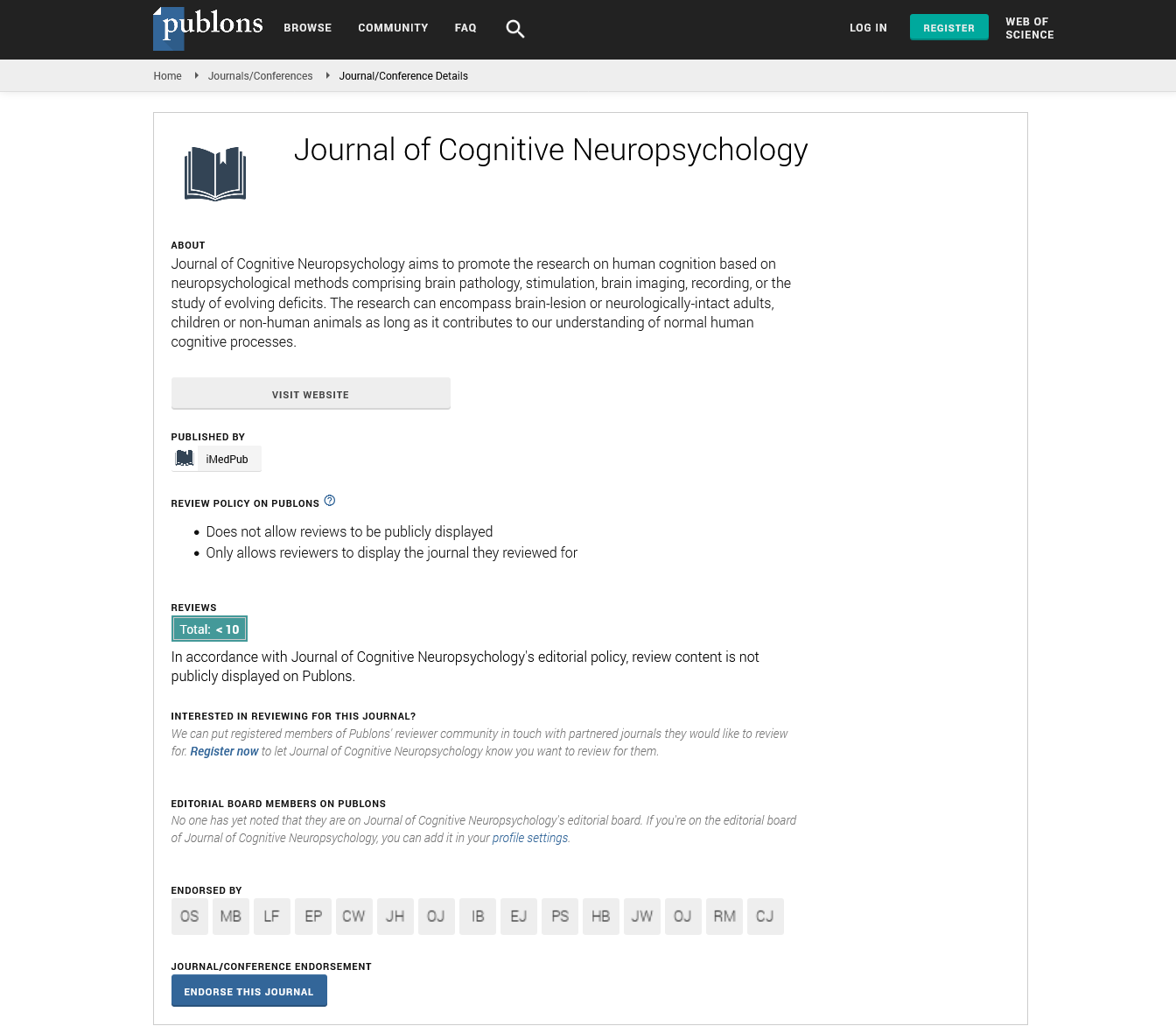Sign Language High Impact Factor Journals
A sign language (also signed language or just signing) is a form of language which uses manual communication and visual communication to convey a meaning, as against acoustically conveyed sound patterns. This may involve simultaneously combining hand shapes, orientation and movement of the hands, arms or body, and facial expressions to fluidly express a speaker's thoughts. They share many similarities with spoken languages (sometimes called "oral languages", which depend totally on sound), which is why linguists consider both to be natural languages, but there also are some significant differences between signed and spoken languages. Wherever communities of deaf people exist, sign languages develop. Sign language is a means of communication for persons who can hear, but cannot physically speak. While they utilize space for grammar during a way that spoken languages don’t, sign languages exhibit an equivalent linguistic properties and use an equivalent language faculty as do spoken languages. Many sign languages are in use around the world and are at the core of local deaf culture. Some sign languages have obtained some sort of legal recognition, while others haven't any status in the least. High-impact journals are those considered to be highly influential in their respective fields. The impact factor of journal provides quantitative assessment tool for grading, evaluating, sorting and comparing journals of comparable kind.
High Impact List of Articles
-
29th Euro-Global Neurologists Meeting
Mitra AssadiEditorial: Journal of Cognitive Neuropsychology
-
29th Euro-Global Neurologists Meeting
Mitra AssadiEditorial: Journal of Cognitive Neuropsychology
-
7th World Congress on Mental Health, Psychiatry and Well-being
Erin RamachandranEditorial: Journal of Cognitive Neuropsychology
-
7th World Congress on Mental Health, Psychiatry and Well-being
Erin RamachandranEditorial: Journal of Cognitive Neuropsychology
-
Avatarization, Another Way to Understand Cyberbullyers Behaviour in the Realand the Virtual Worlds as Described by Net-Profiling
Nadine TouzeauReview Article: Journal of Cognitive Neuropsychology
-
Avatarization, Another Way to Understand Cyberbullyers Behaviour in the Realand the Virtual Worlds as Described by Net-Profiling
Nadine TouzeauReview Article: Journal of Cognitive Neuropsychology
-
Exploring Passive Music Listening and its Impact on Cognition: Attitudes in Focus
Vaitsa Giannouli*Editorial: Journal of Cognitive Neuropsychology
-
Exploring Passive Music Listening and its Impact on Cognition: Attitudes in Focus
Vaitsa Giannouli*Editorial: Journal of Cognitive Neuropsychology
-
Cognition Neuropsychology Cognition
Treatment ‘4 Phase’ Initiating Spontaneous
Remission in Most Mental Disorders
Matthew D DovelEditorial: Journal of Cognitive Neuropsychology
-
Cognition Neuropsychology Cognition
Treatment ‘4 Phase’ Initiating Spontaneous
Remission in Most Mental Disorders
Matthew D DovelEditorial: Journal of Cognitive Neuropsychology
-
Ostracism: Recent Neurological, Cognitive
and Personality Research
Erez YaakobiEditorial: Journal of Cognitive Neuropsychology
-
Ostracism: Recent Neurological, Cognitive
and Personality Research
Erez YaakobiEditorial: Journal of Cognitive Neuropsychology
Conference Proceedings
-
The mental health of orphans and vulnerable children (OVC) impacted by parental HIV/AIDS: A sample from rural South Africa
Comfort Asanbe -
The mental health of orphans and vulnerable children (OVC) impacted by parental HIV/AIDS: A sample from rural South Africa
Comfort Asanbe -
Non-invasive home-based brain monitoring for dementia and pre-dementia patients
Philip Steven LowPosters & Accepted Abstracts: Journal of Neuropsychiatry
-
Non-invasive home-based brain monitoring for dementia and pre-dementia patients
Philip Steven LowPosters & Accepted Abstracts: Journal of Neuropsychiatry
-
Strategy for controlling brain inflammation due to aging, head trauma and genetic predisposition of Alzheimers disease
Girish J KotwalKeynote: Journal of Neuropsychiatry
-
Strategy for controlling brain inflammation due to aging, head trauma and genetic predisposition of Alzheimers disease
Girish J KotwalKeynote: Journal of Neuropsychiatry
-
Two-track differentiation paradigm in psychotherapy
Shaul Navon, Joseph Meyerson and Yael LahavPosters & Accepted Abstracts: Journal of Neurology and Neuroscience
-
Two-track differentiation paradigm in psychotherapy
Shaul Navon, Joseph Meyerson and Yael LahavPosters & Accepted Abstracts: Journal of Neurology and Neuroscience
-
Psychopathy and response inhibition
Kathrin WeidackerPosters & Accepted Abstracts: Journal of Neurology and Neuroscience
-
Psychopathy and response inhibition
Kathrin WeidackerPosters & Accepted Abstracts: Journal of Neurology and Neuroscience
-
A narrative study of immigrant psychologists experiences of working professionally in the cultural context of Aotearoa, New Zealand
Adriana ThomasPosters & Accepted Abstracts: Journal of Neurology and Neuroscience
-
A narrative study of immigrant psychologists experiences of working professionally in the cultural context of Aotearoa, New Zealand
Adriana ThomasPosters & Accepted Abstracts: Journal of Neurology and Neuroscience
-
The assessment of the combined effect of transcranial direct current stimulation and transcranial magnetic stimulation using neuro-imaging in tinnitus patients
Eun-Bit Bae and Jae-Jin SongPosters & Accepted Abstracts: Journal of Neurology and Neuroscience
-
The assessment of the combined effect of transcranial direct current stimulation and transcranial magnetic stimulation using neuro-imaging in tinnitus patients
Eun-Bit Bae and Jae-Jin SongPosters & Accepted Abstracts: Journal of Neurology and Neuroscience
-
An Interventional study to promote appropriate use of psychotropic drugs in care homes in people with dementia
Debjani Banerjee GangopadhyayScientificTracks Abstracts: Insights in Neurosurgery
-
An Interventional study to promote appropriate use of psychotropic drugs in care homes in people with dementia
Debjani Banerjee GangopadhyayScientificTracks Abstracts: Insights in Neurosurgery
-
Dementia and care practice
Krista BurnsPosters & Accepted Abstracts: Insights in Neurosurgery
-
Dementia and care practice
Krista BurnsPosters & Accepted Abstracts: Insights in Neurosurgery
Relevant Topics in Neurology & Psychiatry
Google Scholar citation report
Citations : 8
Journal of Cognitive Neuropsychology received 8 citations as per Google Scholar report
Journal of Cognitive Neuropsychology peer review process verified at publons
Abstracted/Indexed in
- Google Scholar
- Publons
- MIAR
Open Access Journals
- Aquaculture & Veterinary Science
- Chemistry & Chemical Sciences
- Clinical Sciences
- Engineering
- General Science
- Genetics & Molecular Biology
- Health Care & Nursing
- Immunology & Microbiology
- Materials Science
- Mathematics & Physics
- Medical Sciences
- Neurology & Psychiatry
- Oncology & Cancer Science
- Pharmaceutical Sciences
